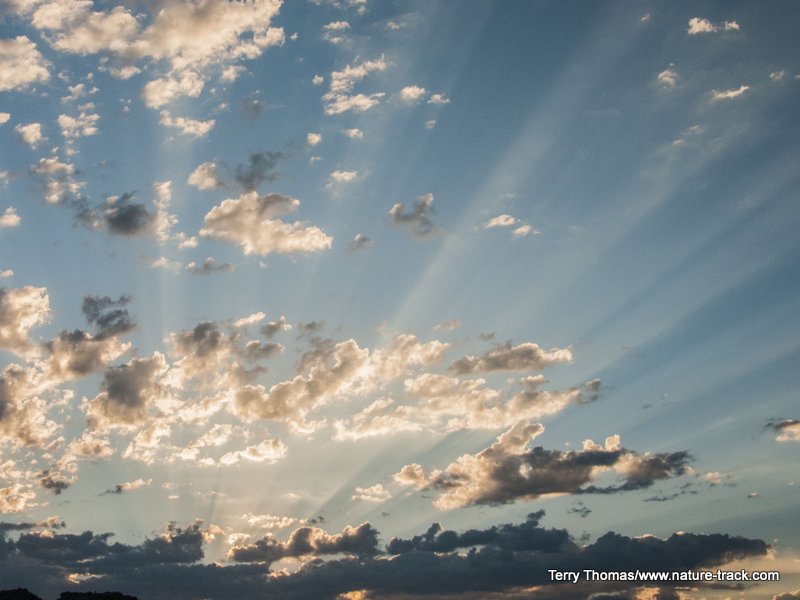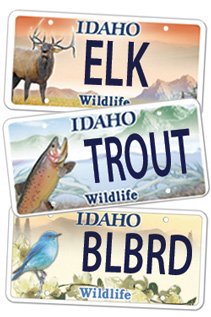Light

Light streams are a reminder of the importance of light to life on Earth.
Our days are getting shorter, with sunrise and sunset separated by less than ten hours. That seems short, but compared to Fairbanks, Alaska, it is a lifetime. Currently, only five hours of daytime fit between sunrise and sunset there. On December 21, when the winter solstice occurs, our day will be 21 minutes shorter than when I am writing this. Fairbanks will lose another 83 minutes, with sunrise at 10:58 a.m. and sunset at 2:40 p.m. That reminds me why I could never live in Alaska.
I appreciate every photon of sunlight during this time of year and try to spend most of my time outdoors, especially under blue skies, even if it is cold. Daylight is as precious as gold to one afflicted with SAD, or seasonal affective disorder.
However, appreciating light is not the same as understanding it. According to Encyclopedia Britannica, “Light (is) electromagnetic radiation that can be detected by the human eye. Electromagnetic radiation occurs over an extremely wide range of wavelengths, from gamma rays with wavelengths less than about 1 × 10−11 meter to radio waves measured in meters. Within that broad spectrum the wavelengths visible to humans occupy a very narrow band, from about 700 nanometers (nm or billionths of a meter) for red light down to about 400 nm for violet light. The spectral regions adjacent to the visible band are often referred to as light also, infrared at the one end and ultraviolet at the other.”
At the most basic level, we can think of light as discreet particle energy packets called photons. This is called the corpuscular theory and was championed by Isaac Newton. However, Thomas Young, an optometrist in the 1800’s, demonstrated that light behaves as a wave, not a particle. Eventually, it was determined that light has a dual nature, called wave-particle duality, that is revealed only through quantum mechanics. “Since the mid-20th century, a more comprehensive theory of light, known as quantum electrodynamics (QED), has been regarded by physicists as complete (Encyclopedia Brittanica).”
However, I am delving no further into quantum mechanics. Instead, I want to “bring to light” a few interesting facts. First, light travels fast. Real fast. In a vacuum, light travels at exactly 299,792,458 meters or about 186,282 miles per second. Sunlight makes the 93-million-mile journey to Earth in 490-507 seconds (8.17-8.45 minutes) depending on how close the sun and the Earth are together.
Most of us have seen that white light shone through a prism is broken down into its individual colors or wavelengths: red, orange, yellow, green, blue, indigo, and violet. Sometimes, when the sun shines through water droplets in the air, we get the same effect and call it a rainbow.
Photographers are very aware that light also has properties that dramatically influence an image. Light can be warm like fire—red, orange and yellow or cool like ice—blue, purple and cyan. Green can behave as either cool or warm. Warm-toned images usually evoke feelings of comfort, closeness, and passion while cool colors evoke feelings of sadness, distance, and calm. These values are usually referred to as light temperature as measured in Kelvin with warmer colors having lower values. For instance, according to Westinghouselighting.com, lightbulbs in the 2000-3000K range are considered warm white (white light with a yellow cast) and used to create mood while those in the 4500-6000K will be cool daylight (light with a blue cast) and used to invigorate.
Light bends when it changes mediums. This is called refraction and the classic example is light penetrating water. Light travels slower in water than air and the result can be interesting. For instance, an object under water may appear to be closer than it really is. Light passing through water in a jar can make an object behind the jar appear to be facing the other direction.
Light that isn’t absorbed by an object is reflected by it. If the surface is smooth like a mirror, the light is reflected back at the same angle it hits the surface—angle of incidence (incoming light) equals the angle of reflectance. If a light beam hits a mirror at 30 degrees, it will reflect off at 30 degrees. If the surface is irregular, then there may be multiple angles of reflectance at varying degrees.
The best thing about light is that it chases away darkness. The two cannot co-exist. If we keep the fires stoked within us, we will always walk in light and be a guide for those who depend upon us.
Wildlife License Plates
Great news! as of 2024, there are three NEW designs for license plates. They still are bluebird, cutthroat trout and elk, but they are beautiful.
Idaho Wildlife license plates provide essential funding that benefits the great diversity of native plants and wildlife that are not hunted, fished or trapped—over 10,000 species or 98% of Idaho’s species diversity. Game species that share the same habitats (such as elk, deer, antelope, sage-grouse, salmon, trout) also benefit from these specialty plates.
No state tax dollars are provided for wildlife diversity, conservation education and recreation programs. Neither are any revenues from the sale of hunting or fishing licenses spent on nongame species. Instead, these species depend on direct donations, federal grants, fundraising initiatives—and the Idaho Wildlife license plates.
Both my vehicles have Bluebird Plates. I prefer the bluebird because the nongame program gets 70 percent of the money from bluebird plates, but only 60 percent of the money from elk and trout plates - 10 percent of the money from elk plates supports wildlife disease monitoring and testing programs (to benefit the livestock industry) and 10 percent from cutthroat plates supports non-motorized boat access.
Incidentally, in 2014, the Idaho Legislature denied the Department of Fish and Game the ability to add new plates or even to change the name of the elk and cutthroat plates (very specific) to wildlife and fish plates, a move that would have allowed for changing images occasionally and generating more revenue. It would seem that they believe that we Idahoans don't want a well funded wildlife program.
I think it is time we let the Legislature know that Idahoan support wildlife funding and that we would like to see these generic plates come to fruition.
Help Idaho Wildlife
When we traveled across the state in October 2017, we visited most of the Idaho Department of Fish and Game wildlife management areas. Most of the vehicles we saw using the wildlife management areas did not have wildlife plates. Buying wildlife plates is a great way for non-hunters and hunters alike to support wildlife-based recreation like birding.
C'mon folks, let's help Idaho's wildlife by proudly buying and displaying a wildlife license plate on each of our vehicles!
See below for information on Idaho plates. Most states have wildlife plates so if you live outside Idaho, check with your state's wildlife department or vehicle licensing division for availability of state wildlife plates where you live.
And tell them that you heard about it from Nature-track.com!

Wildlife License Plates
Great news! as of 2024, there are three NEW designs for license plates. They still are bluebird, cutthroat trout and elk, but they are beautiful.
Idaho Wildlife license plates provide essential funding that benefits the great diversity of native plants and wildlife that are not hunted, fished or trapped—over 10,000 species or 98% of Idaho’s species diversity. Game species that share the same habitats (such as elk, deer, antelope, sage-grouse, salmon, trout) also benefit from these specialty plates.
No state tax dollars are provided for wildlife diversity, conservation education and recreation programs. Neither are any revenues from the sale of hunting or fishing licenses spent on nongame species. Instead, these species depend on direct donations, federal grants, fundraising initiatives—and the Idaho Wildlife license plates.
Both my vehicles have Bluebird Plates. I prefer the bluebird because the nongame program gets 70 percent of the money from bluebird plates, but only 60 percent of the money from elk and trout plates - 10 percent of the money from elk plates supports wildlife disease monitoring and testing programs (to benefit the livestock industry) and 10 percent from cutthroat plates supports non-motorized boat access.
Incidentally, in 2014, the Idaho Legislature denied the Department of Fish and Game the ability to add new plates or even to change the name of the elk and cutthroat plates (very specific) to wildlife and fish plates, a move that would have allowed for changing images occasionally and generating more revenue. It would seem that they believe that we Idahoans don't want a well funded wildlife program.
I think it is time we let the Legislature know that Idahoan support wildlife funding and that we would like to see these generic plates come to fruition.

"WOW. What a phenomenal piece you wrote. You are amazing." Jennifer Jackson
That is embarrassing, but actually a fairly typical response to my nature essays. Since The Best of Nature is created from the very best of 16 years of these nature essays published weekly in the Idaho Falls Post Register (online readership 70,000), it is a fine read. It covers a wide variety of topics including humorous glimpses of nature, philosophy, natural history, and conservation. Readers praise the style, breadth of subject matter and my ability to communicate complex and emotional topics in a relaxed and understandable manner.
Everyone can find something to love in this book. From teenagers to octogenarians, from the coffee shop to the school room, these nature essays are widely read and enjoyed.
Some of the essays here are my personal favorites, others seemed to strike a chord with readers. Most have an important message or lesson that will resonate with you. They are written with a goal to simultaneously entertain and educate about the wonderful workings of nature. Some will make you laugh out loud and others will bring a tear to the eye and warm your heart.
Readers Write:
"You hit a home run with your article on, Big Questions in Nature. It should be required reading for everyone who has lost touch with nature...great job!" Joe Chapman
"We enjoyed your column, Bloom Where Planted. Some of the best writing yet. The Post Register is fortunate to have your weekly columns." Lou Griffin.
To read more and to order a copy, click here or get the Kindle version
Copies are also available at:
Post Register
Island Park Builders Supply (upstairs)
Barnes and Noble in Idaho Falls
Harriman State Park, Island Park
Museum of Idaho
Valley Books, Jackson Wyoming
Avocet Corner Bookstore, Bear River National Wildlife Refuge, Brigham City, Utah
Craters of the Moon National Monument Bookstore, Arco, Idaho